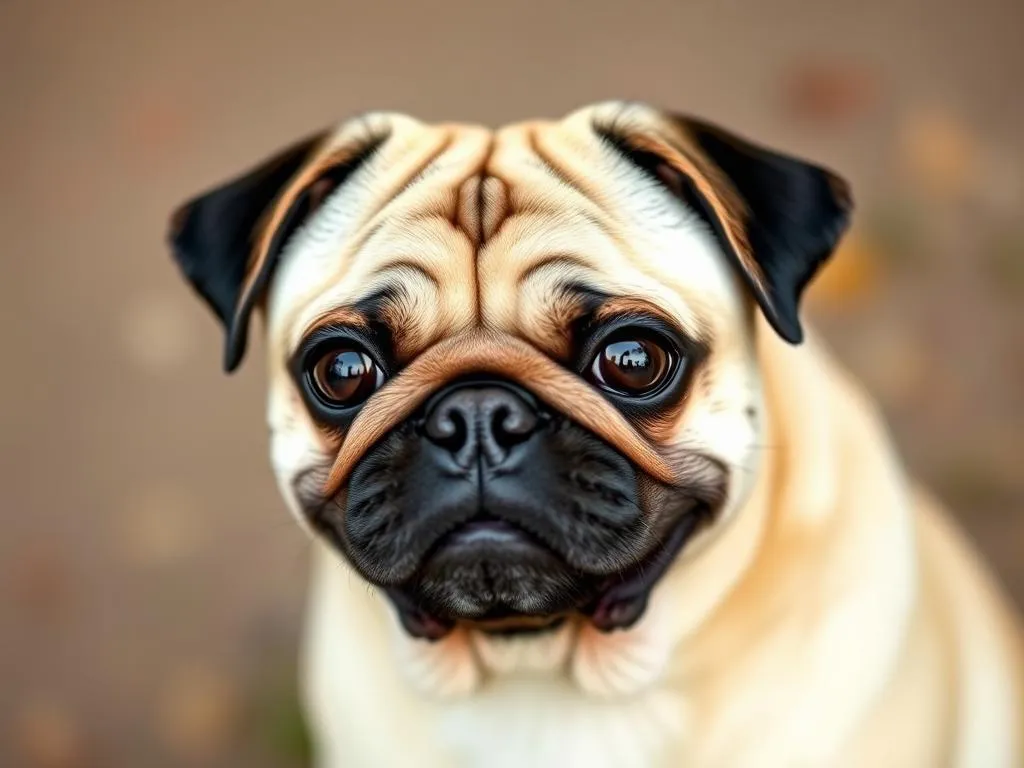
Introduction
The pug dog breed is undeniably one of the most charming and beloved companions in the canine world. With their wrinkled faces, curled tails, and affectionate nature, pugs have captured the hearts of many dog lovers. Understanding the characteristics, care requirements, and unique behaviors of pugs is crucial for anyone considering bringing one of these delightful dogs into their home. This article aims to educate readers about the fascinating traits of pugs, their history, and how to properly care for them, ensuring both the pet and owner can enjoy a happy and fulfilling life together.
History of the Pug Breed
The history of the pug dog breed is as intriguing as the breed itself. Originating in ancient China, pugs were bred to be companions for royalty. They were often kept in luxury and pampered by emperors, showcasing their importance as symbols of status and affection. The breed’s charm soon spread beyond China, captivating the hearts of European noble families when they were introduced in the 16th century.
As the pug dog breed evolved, it found itself in the courts of various European countries, becoming a favorite among royals in the Netherlands and Britain. Notably, the pug was the official dog of the House of Orange in the Netherlands. Over time, the breed has adapted to modern life, becoming a popular pet choice for families and individuals alike.
Physical Characteristics
Pugs are small, sturdy dogs typically weighing between 14 to 18 pounds and standing around 10 to 14 inches tall at the shoulder. Their compact frame and muscular build make them well-suited for various living environments.
Distinctive Features
One of the most recognizable traits of the pug dog breed is its unique facial structure. Pugs have a flat face, large, expressive eyes, and a distinctive wrinkled forehead, giving them an endearing appearance. Their coat is short and smooth, coming in various colors such as fawn, black, and apricot, each adding to their charm.
However, these physical traits also come with health considerations. The brachycephalic nature of pugs can lead to respiratory issues, particularly in hot or humid weather. Therefore, it’s essential for pug owners to be aware of these potential health concerns.
Temperament and Behavior
Pugs are known for their friendly, playful, and affectionate demeanor. They thrive on companionship and are known to be excellent family pets. Their cheerful disposition makes them a joy to be around, often bringing laughter and warmth to any household.
Socialization Needs
Early socialization is vital for pugs, as it helps them develop into well-adjusted adults. Exposure to various environments, people, and other animals can significantly impact their behavior. Training should begin early and be consistent to foster good manners and eliminate potential behavioral issues.
Pugs are generally loyal and adaptable, making them suitable for families with children or other pets. However, like all breeds, they can exhibit behavioral issues if not properly trained or socialized. Understanding these traits can help owners navigate any challenges that arise.
Care and Maintenance
Caring for a pug dog breed involves understanding their specific needs in terms of nutrition, exercise, and grooming.
Nutrition Requirements
A balanced diet is essential for maintaining a pug’s health. High-quality dog food that meets their nutritional needs is recommended. Pugs are prone to obesity, so it’s crucial to monitor their food intake and avoid overfeeding. Treats should be given sparingly, ensuring they do not exceed 10% of their daily caloric intake.
Exercise Needs
Pugs need regular exercise to maintain a healthy weight and prevent boredom. Daily walks and playtime are essential, but due to their brachycephalic nature, owners should ensure that exercise is moderate. Engaging in short, fun activities can keep them active without overexerting themselves.
Grooming Essentials
Grooming a pug dog breed is relatively straightforward, given their short coat. They shed moderately, so regular brushing can help minimize loose fur around the house. Bathing should be done as needed, and attention should be given to their facial wrinkles to prevent irritation and infection. Regular nail trimming is also essential for their overall well-being.
Health Considerations
Like all breeds, pugs are susceptible to certain health issues. Being aware of these potential problems can help owners provide the best care possible.
Common Health Issues
One of the most significant health concerns for the pug dog breed is brachycephalic airway syndrome, which can lead to breathing difficulties. This condition is heightened in hot or humid conditions, so it’s crucial to keep pugs cool and comfortable.
Eye problems are also prevalent among pugs. They are prone to conditions like corneal ulcers and cataracts, which can lead to vision impairment if not addressed promptly. Regular veterinary check-ups are vital for early detection and treatment.
Joint issues, such as hip dysplasia, can occur, particularly in older pugs. Maintaining a healthy weight through proper diet and exercise can help mitigate these risks.
Importance of Regular Veterinary Check-Ups
Routine veterinary visits are essential for ensuring a pug’s health. Vaccinations and preventive care can help protect against common diseases. Regular check-ups also allow for early detection of any potential health issues, ensuring a long and healthy life for your pug.
Living with a Pug
Pugs make wonderful family pets due to their friendly nature and adaptability. They thrive on companionship and enjoy being part of family activities.
Suitability as a Family Pet
Pugs are generally good with children and can adapt well to life with other pets. Their playful demeanor makes them enjoyable playmates for kids, and their affectionate nature means they will often seek out attention and companionship.
Adaptability to Different Living Environments
Whether in an apartment or a house, pugs can adjust to various living situations. They don’t require a large yard, but they do need regular walks and playtime to stay healthy and happy. Their moderate energy levels make them suitable for both active and laid-back households.
Tips for First-Time Pug Owners
For first-time pug owners, understanding the breed’s unique needs is essential. Here are some best practices for integrating a pug into your home:
- Establish a Routine: Pugs thrive on routine, so setting regular feeding and walking times can help them feel secure.
- Positive Reinforcement Training: Use treats and praise to train your pug, as they respond well to positive reinforcement.
- Socialization: Expose your pug to various environments, people, and other animals to help them develop good social skills.
Fun Facts About Pugs
Pugs are not only adorable but also come with their own set of quirky traits that make them even more lovable.
Unusual Traits and Quirks
Pugs have a reputation for their silly antics and playful nature. They are known to be “clowns” of the dog world, often making their owners laugh with their playful behavior. Their unique vocalizations, which can include snorts and grunts, add to their charm.
Famous Pugs in Pop Culture
The pug dog breed has made its mark in pop culture, with several notable appearances in movies and TV shows. One of the most famous pugs is Frank, the iconic character from the film “Men in Black.” Pugs have also appeared in various commercials and internet memes, showcasing their popularity and endearing appeal.
Interesting Statistics About the Breed
- The pug is one of the top 30 most popular dog breeds in the United States.
- Pugs can live between 13 to 15 years, making them a long-term companion.
- They come in a variety of colors, with fawn being the most common, followed closely by black.
Conclusion
In summary, the pug dog breed is a delightful companion known for its affectionate nature, unique appearance, and playful spirit. With a rich history, distinct physical characteristics, and specific care needs, understanding pugs is essential for potential owners. As we’ve explored, pugs are not only adaptable family pets but also bring joy and laughter into our lives. If you’re considering welcoming a pug into your home, you can look forward to a loving and entertaining companion that will undoubtedly enrich your life.









